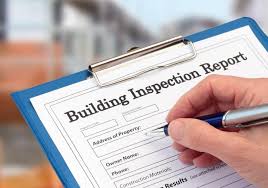Supplier inspection is a crucial aspect of maximizing efficiency in any supply chain management system. By thoroughly evaluating the quality...
Supplier inspection is a crucial aspect of maximizing efficiency in any supply chain management system. By thoroughly evaluating the quality and performance of suppliers, organizations can ensure that they are meeting third party inspection established standards and delivering products and services that meet customer expectations. Effective supplier inspection can help identify potential risks and optimize operations, ultimately leading to improved overall efficiency. In this article, we will explore the importance of supplier inspection in maximizing efficiency and how organizations can enhance this process to achieve better results.
Maximizing efficiency through effective supplier inspection involves implementing a systematic process for evaluating the quality and reliability of suppliers. This ensures that products and materials meet the required third party inspection agency standards and specifications, which in turn reduces the risk of defects, delays, and non-compliance. By conducting thorough inspections, companies can identify potential issues early on and work with suppliers to address them, ultimately improving overall performance and productivity. Additionally, effective supplier inspection helps build stronger partnerships with suppliers, leading to better communication, transparency, and collaboration. This can result in cost savings, better product quality, and increased customer satisfaction.
Maximizing efficiency through effective supplier inspection involves setting clear standards, conducting regular audits, and providing third party inspection certificate feedback to suppliers. It may also involve using technology, such as data analytics and supply chain management systems, to streamline the inspection process. By maintaining a proactive approach to supplier inspection, businesses can minimize disruptions, reduce waste, and enhance the overall reliability of their supply chain. This can lead to cost savings, improved product quality, and better fulfillment of customer demands.
Understanding the Importance of Supplier Inspection in Quality Control

Supplier inspection is a critical aspect of quality control in the manufacturing and production industries. It involves thoroughly evaluating the quality, reliability, and consistency of the goods or materials received from suppliers to ensure they meet the necessary standards. By conducting supplier inspections, businesses can identify any potential issues or discrepancies early in the production process, allowing for necessary adjustments and corrections to be made. This ultimately helps in preventing defects, non-conformities, and quality issues from affecting the final products. Effective supplier inspection also helps in building and maintaining strong, reliable relationships with suppliers. By setting clear quality expectations and consistently evaluating the performance of suppliers, businesses can ensure that they are receiving high-quality materials and components that meet their specifications. This can lead to improved product quality, reduced production costs, and increased customer satisfaction. Overall, understanding the importance of supplier inspection in quality control is essential for businesses to maintain and improve the overall quality and reliability of their products. It helps in mitigating risks, ensuring compliance with quality standards, and ultimately contributes to the success and reputation of the business.
The Process of Conducting Effective Supplier Inspections for Your Business

The process of conducting effective supplier inspections for your business involves several key steps. First, it's important to establish clear criteria and expectations for the inspection. This may include specific quality standards, delivery timelines, or other performance metrics. Next, it's essential to communicate these expectations to the supplier in advance of the inspection. This ensures that they understand what will be evaluated and can adequately prepare. During the inspection itself, it's important to thoroughly assess the supplier's facilities, processes, and documentation to determine compliance with your standards. This may involve conducting physical inspections, reviewing records, and interviewing key personnel. After the inspection, it's important to provide feedback to the supplier, including any non-conformities or areas for improvement. This can help to foster a collaborative relationship and ensure that future inspections are more successful. Finally, it's important to follow up on any corrective actions identified during the inspection to ensure that the supplier makes necessary improvements. Overall, conducting effective supplier inspections requires careful planning, clear communication, thorough evaluation, and follow-up. By implementing a well-defined process, businesses can ensure that their suppliers are meeting their standards and delivering quality products or services.
How Supplier Inspections Contribute to Supply Chain Risk Management

Supplier inspections contribute to supply chain risk management by ensuring that suppliers meet quality, safety, and regulatory standards. Inspections help identify potential risks such as poor quality materials, unethical labor practices, or non-compliance with regulations. By proactively identifying and addressing these risks, companies can minimize disruptions to their supply chain and protect their brand reputation. Supplier inspections also help improve communication and transparency with suppliers, leading to stronger business relationships and more reliable supply chains. Overall, supplier inspections play a crucial role in reducing supply chain risks and ensuring the quality and integrity of products and materials.
The Benefits of Outsourcing Supplier Inspections to Third-Party Organizations

Outsourcing supplier inspections to third-party organizations can bring several benefits to a company. Firstly, it allows for an unbiased and independent assessment of the supplier's facilities, processes, and products. This can help in identifying any potential issues or areas for improvement without any conflict of interest. Secondly, it can save time and resources for the company, as they do not have to allocate their own staff to conduct the inspections. Third-party organizations specializing in supplier inspections are often more efficient and experienced, leading to more thorough and accurate assessments. Additionally, outsourcing supplier inspections can help in ensuring compliance with industry standards and regulations. Third-party organizations are often well-versed in the specific requirements and can provide expert guidance in this area. Lastly, outsourcing supplier inspections can provide valuable insights and benchmarks for the company in terms of supplier performance and quality. This can ultimately lead to improved supplier relationships and better overall quality control for the company's products or services.
Common Challenges Faced in Supplier Inspections and How to Overcome Them
third party inspection
Some common challenges faced in supplier inspections include language barriers, cultural differences, inconsistent quality standards, and lack of transparency. To overcome these challenges, it's important to have clear communication with the supplier to ensure everyone is on the same page regarding expectations and standards. It can also be helpful to work with local interpreters or hire inspection services with multilingual capabilities to bridge the language gap. Additionally, taking the time to understand the supplier's cultural norms and business practices can help in building rapport and addressing any differences in approach. Setting clear and agreed-upon quality standards, and regularly monitoring and providing feedback can help ensure consistent quality. Lastly, establishing a transparent and open communication channel with the supplier can help in addressing any issues that may arise and build a collaborative relationship for future inspections.
The Role of Technology in Streamlining Supplier Inspections in the Digital Age
Technology plays a crucial role in streamlining supplier inspections in the digital age. With the help of digital tools and platforms, businesses can effectively manage and conduct supplier inspections, ensuring quality and compliance with regulations. These technologies include cloud-based inspection software, mobile apps for on-site inspections, and virtual reality for remote inspections. These tools allow businesses to streamline the inspection process by capturing real-time data, generating reports, and automating follow-up actions. Furthermore, technology enables businesses to centralize and standardize inspection procedures, ensuring consistency and accuracy across different suppliers and locations. This streamlining of supplier inspections not only reduces the risk of non-compliance and quality issues but also improves communication and collaboration between businesses and their suppliers. Overall, technology in the digital age has revolutionized the way supplier inspections are conducted, making the process more efficient, transparent, and reliable.
Best Practices for Enhancing Supplier Inspections and Supplier Performance
third party inspection agency
Enhancing supplier inspections and performance involves implementing a range of best practices. This includes thoroughly defining and communicating quality standards, conducting regular audits, and providing constructive feedback to suppliers. It also involves establishing clear expectations and fostering open communication to address any issues that arise. Additionally, ongoing supplier development and training can help improve overall performance and ensure compliance with regulations and industry standards. Collaboration with suppliers to identify areas for improvement and implementing effective corrective actions is also key to enhancing supplier inspections and overall performance. Regular performance reviews, benchmarking, and utilizing key performance indicators can also drive continuous improvement and help maintain high standards.
The Future of Supplier Inspections: Trends and Innovations to Look Out For
The Future of Supplier Inspections: Trends and Innovations to Look Out For is an article that explores the upcoming advancements in supplier inspections. It delves into the latest technologies and methodologies that are expected to revolutionize the way supplier inspections are conducted. The article discusses the use of artificial intelligence, machine learning, and data analytics to streamline and enhance the inspection process. It also highlights the growing importance of sustainability and ethical practices in supplier inspections, and the incorporation of these factors into inspection criteria. Additionally, the article addresses the shift towards remote inspections and the use of drones and other remote monitoring technologies. Overall, it provides a comprehensive overview of the key trends and innovations that will shape the future of supplier inspections.
